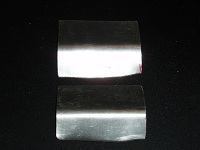July 2011
Last year my son bought me a voucher for the Jonathan Palmer Driving Experience, I finally got around to booking it for this month. My son bought a slot as did Simon from work and his mate Andy. We had a brilliant time, I have added a link in the side bar for a page about this day. Anyway on with this months update.
I construct a string box as described on the build CD to set toe in. I level the chassis and use a laser spirit level to set the string to run through the centre line of the hubs.
To lock the steering in the straight ahead postion I cut a couple of pieces of angled aluminium to fit in between the end of the rack arms (that the track rods conect to) and the rack body.
Setting the toe is easy enough once the string is set up. Camber was then set up using a 2 metre spirit level, a steel rule and some basic trigonometry.
Setting the camber is covered pretty well on Bob's site for the month of August. Basically the angle of camber can be calculated by holding a spirit -level vertically centrally against the bottom sidewall of the tyre and measuring the gap between the top sidewall and the spirit level.
Since these two dimensions are at right angles then an imaginary line between the two contact points on the tyre would be the hypotenuse of a right angled triangle and also would be the same inclination as that of the camber.
So the distance measured between tyre and spirit level would be the side opposite the camber angle and the distance between the two points on the tyre would be the side adjacent to the camber angle.
Remember from school trigonometry, the Tangent of an angle is the side Opposite the angle divided by the side Adjacent to the angle.
I recently read a thread on Pistonheads about bump steer and fine tuning it on the Ultima. Bump steer is caused by a mis-match in the geometry and basically is the effect on the steering when the suspension moves up or down from the normal ride height.
In the following link there is a good description of bump steer.
http://www.calverst.com/articles/SUS-Suspension-Corner_weights_and_bump_steer_basics.htm
So it seems a good time to set this as well. To fine tune the bump steer on the Ultima involves moving the steering rack mounting points up or down. This in turn involves filing out the holes on the chassis and will be easier to do whilst the radiator is not fitted.
I position a jack under one wishbone and after removing the ride height bar I attempt to measure the bump steer. This is quite tedious – measuring how far to riase/lower the suspension and then measuring the toe in.
To be able to set the ride height at various heights above and below the normal ride height I experiment making some adjustable ride height bars. I fabricate these out of two sizes of box section steel, the idea being I can drill holes at half inch intervals and so set the suspension at various heights of bump and drop making it easy to measure the effect on toe in using the string box. This does not work out that well, very cumbersome and I seem to be chasing my tail and not dialling out the bump steer by any real measure. I need to think a bit more about this.





